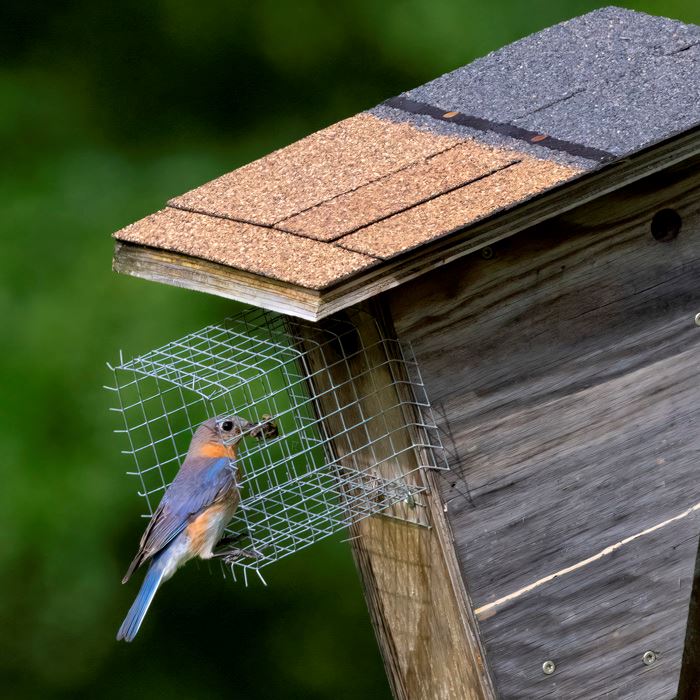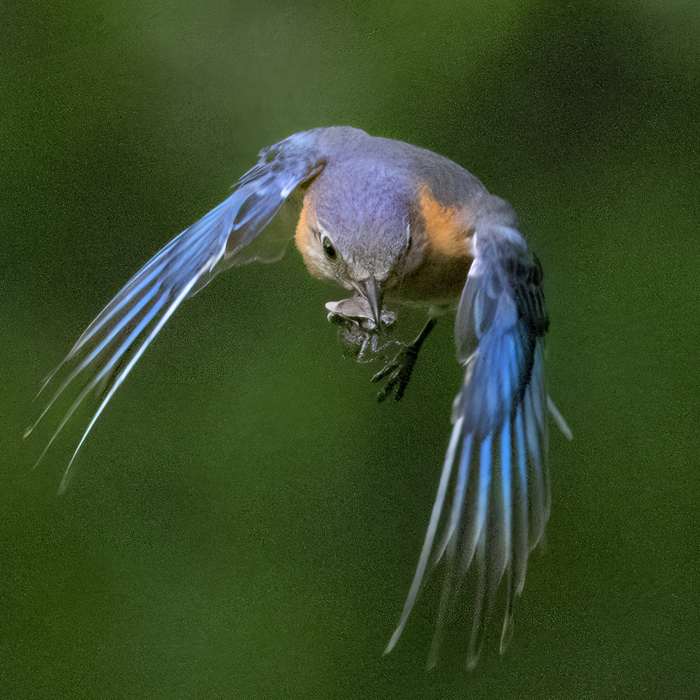A House is A Home for Birds

By Karen Menard
Birds that use tree cavities instead of the branches of a tree or the ground are called “cavity nesters.” These species will also seek appropriately-sized nesting boxes if not enough available “cavity” real estate is situated near their habitat.
Built with more delicate features than a woodpecker—lacking a thick skull, strong neck muscles and a robust beak--songbirds like eastern bluebirds, house wrens and tree swallows are incapable of chiseling their own tree cavity. Known as “secondary nesters,” these species depend on woodpeckers to initially take on the task of creatively chiseling out their future homesteads.
During the 1950s, landscape development, chemicals and non-native species such as house sparrows and starlings contributed to the rapid decline of the Eastern bluebird. As a result, many conservation-based nesting box programs began.
In 1988, Metroparks started its own nesting box program to sustain the Eastern bluebird population. This program has since grown to also support other native cavity nesters like tree swallows, house wrens and the occasional black-capped chickadee and tufted titmouse. Currently, there are over 100 songbird boxes placed in open habitats throughout the park district. Each year, cavity nesters return to these same nesting boxes, calling the Metroparks home.
Through this program over the years Metroparks has continued to sustain the historic Eastern bluebird numbers throughout the Oak Openings Region. In other Metroparks, like Side Cut, Middlegrounds and Howard Marsh, efforts have become more focused on North American tree swallow populations (also known as aerial insectivores) that have declined by almost 50 percent in the last 50 years.

Last season, volunteers contributed almost 300 hours to this program. Much time was spent in the field counting eggs, babies, cleaning out nests and reporting important data. Great efforts like these combined with consistent habitat management practices and seasonal bird box maintenance make for a successful breeding outcome. In 2023, a total of 619 young birds fledged from these boxes—291 eastern bluebirds, 241 house wrens, and 87 tree swallows—making some great contributions to northwest Ohio’s native cavity nester populations.
Did you know?
Eastern bluebirds will not nest in forested habitats. They seek meadow and prairie openings or edges of savannas or flatwoods. Openings are important for catching insect prey.